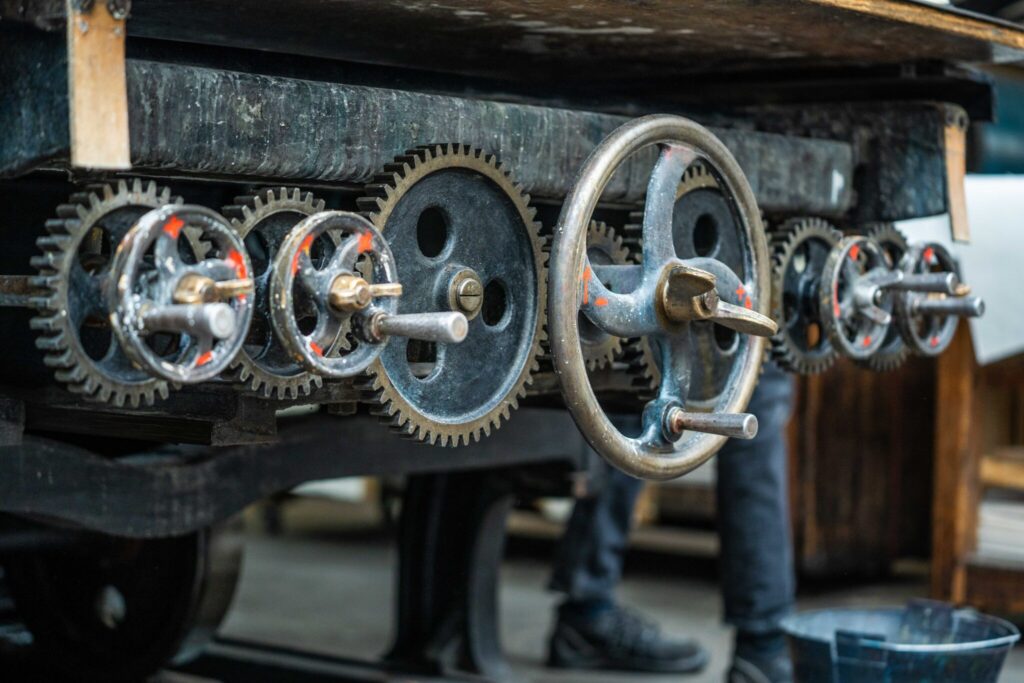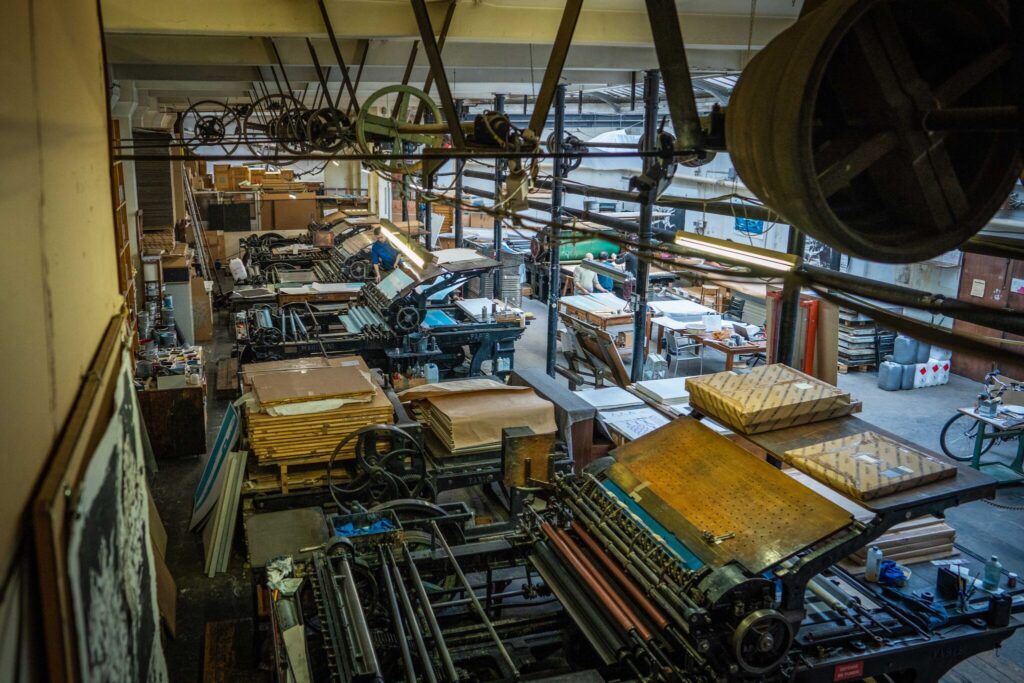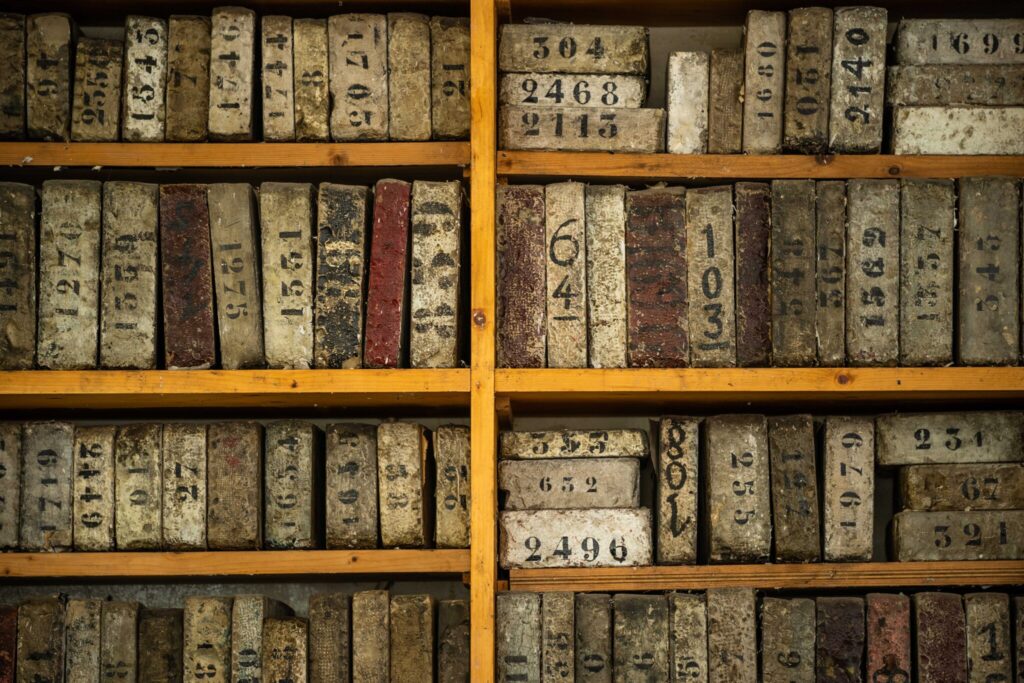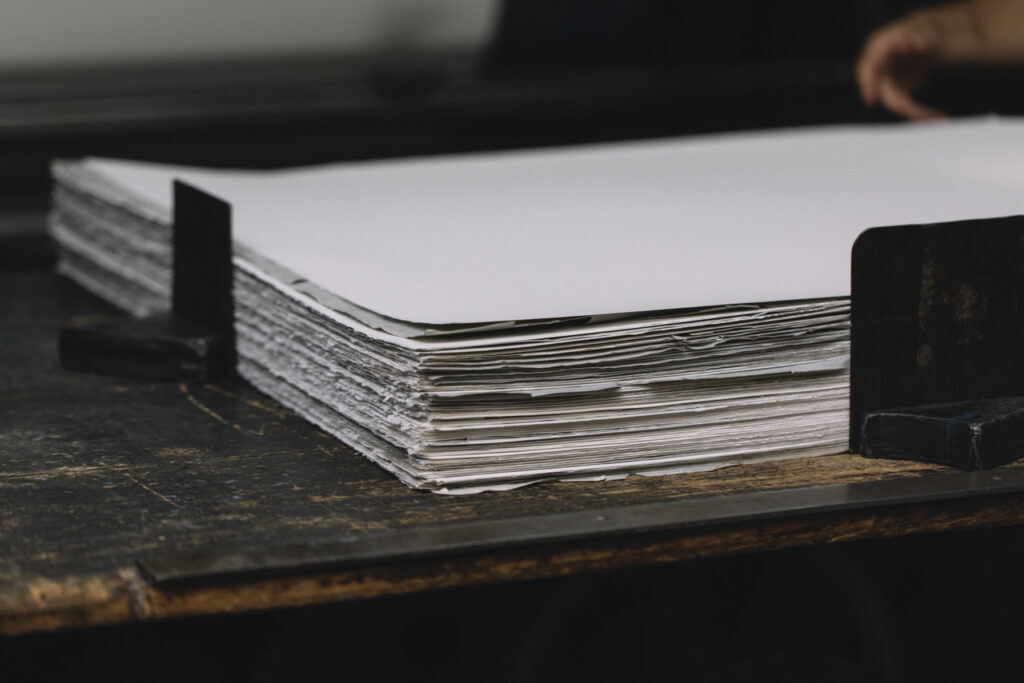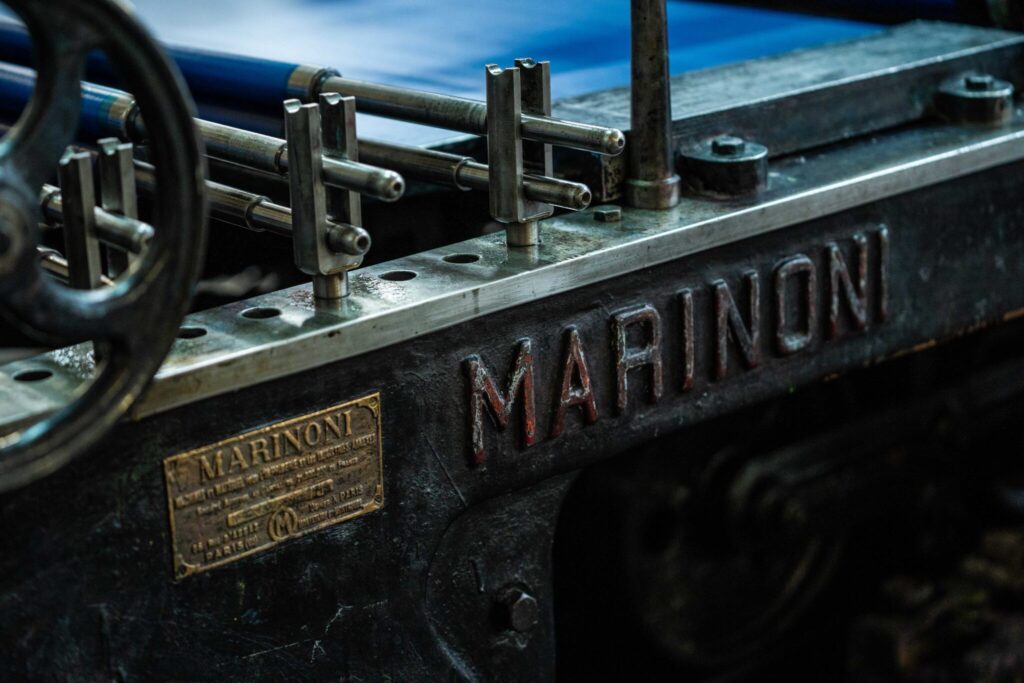Printmaking Techniques
What is lithography ?
The word lithography comes from Ancient Greek, from lithos, meaning “stone”, and graphein, meaning “to write.” The technique was invented in 1796 by German author Alois Senefelder as an economical method of publishing theatrical works. Originally lithographs were created by etching words or images onto stone. Even with the advent of new technologies and the evolution of the printmaking process, some artists and printing houses still practice this traditional printing technique, as we do for the production of our stone lithographs.
- Traditional techniques
Traditional lithography is based on the immiscibility of oil and water. It consists in painting or drawing with oil, fat, or wax directly onto a flat smooth limestone plate to create an image. The stone is then wet, and an oil-based ink is rolled onto it. Different parts of the stone that have received different treatment will hold more or less ink. Finally, the stone is run through a press with paper, and the ink is transferred from the stone to the paper.
- Modern techniques
Modern lithography employs the same basic principle, but in a more efficient way. It consists of covering a printing plate with photosensitive emulsion before the photographic negative of an image is pressed onto it. Then the plate is exposed to ultraviolet light. Once developed, the emulsion shows a reverse of the negative image— a perfect replica of the original artwork.
How are our lithographs printed ?
We alternate between traditional and modern print methods with the aim of creating and proposing the best fine prints. Each of our lithographs is numbered, signed by the artist, and stamped by our publishing house. The production takes place at the oldest Parisian printing house, founded in 1881, where artists such as Pablo Picasso, Henri Matisse, Joan Miró, and even Marc Chagall printed their artworks.
What kind of paper do we use to print our lithographs ?
Paper quality is one of the most important elements of the printing process. The artist’s choice of paper is an important factor in achieving the perfect final effect for the representation of the artwork. Respecting the artist’s wishes, and in order to satisfy you, we work exclusively with the best quality paper to ensure a perfect replica of the artwork, securing optimal results that will stand the test of time. To this end we use handmade 100% cotton paper, such as BFK Rives or Arches.

High Quality Art, Prints & Products
Our products are the result of sophisticated techniques and the highest quality materials to ensure as precise a replication as possible. Each print is numbered and signed by the artist.

We ship your Art Worldwide
We deliver your order between 2–10 business days. Delivery times vary according to the item ordered and its destination.

Printed, packed & shipped with care
We treat every order with the utmost care. If you are not satisfied with your purchase for any reason, please contact us within 24 hours of the reception of your item in order to register your complaint.

Secure payment with Paypal and Credit Cards
Our payment system offers two secure payment options using Credit Cards (Visa, MasterCard, American Express) or your Paypal account.
